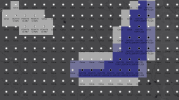I feel like I should know how to find this out, but I've gotta admit my skills and memory are rusty. So let's say the weather is some multi layered scattered/broken situation. You look up and see clouds at a few different levels...and even see some blue.
Observation data will tell you something like say for example few at 1,000, scattered 2,500, broken 7,000
...whatever it is....
How can a pilot determine if there's likely to be a wide enough layer up there to make a reasonable VFR flight?...
don't want to fly below 1,000 ft to stay below everything.... instead need to basically determine the tops of the 2,500 scattered layer for example
Are pireps the only answer? based on my experience it's unlikely to have enough pireps to be useful for this purpose.
Observation data will tell you something like say for example few at 1,000, scattered 2,500, broken 7,000
...whatever it is....
How can a pilot determine if there's likely to be a wide enough layer up there to make a reasonable VFR flight?...
don't want to fly below 1,000 ft to stay below everything.... instead need to basically determine the tops of the 2,500 scattered layer for example
Are pireps the only answer? based on my experience it's unlikely to have enough pireps to be useful for this purpose.


